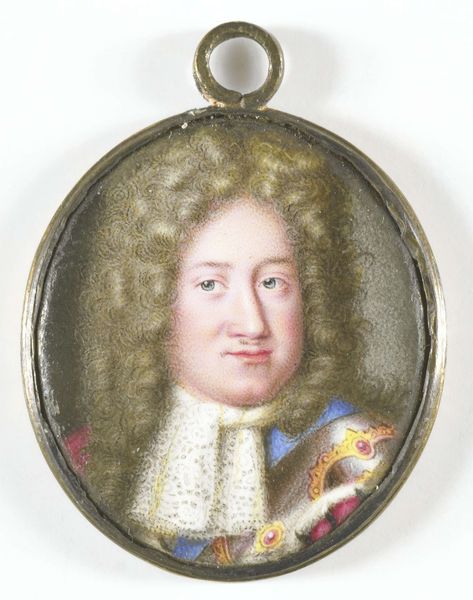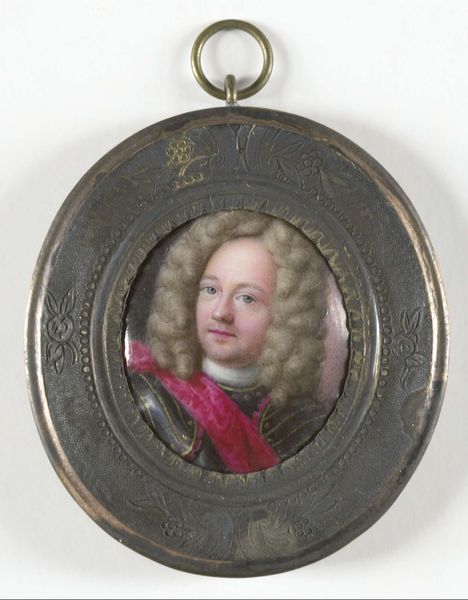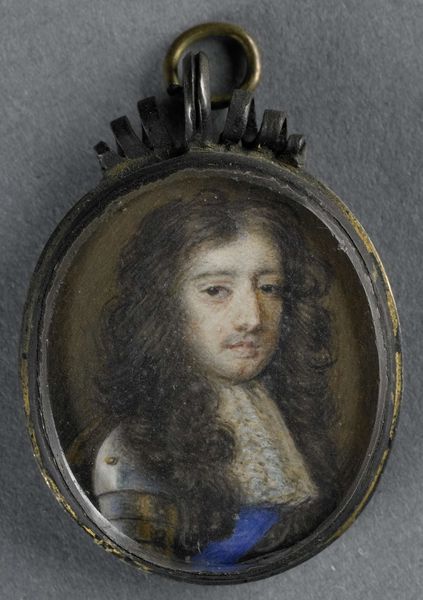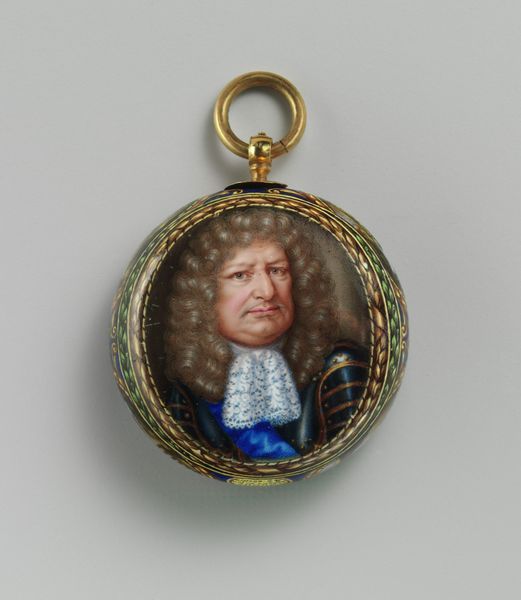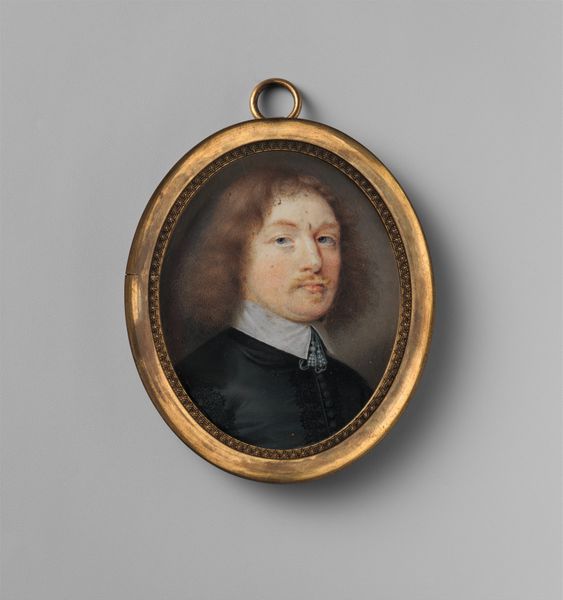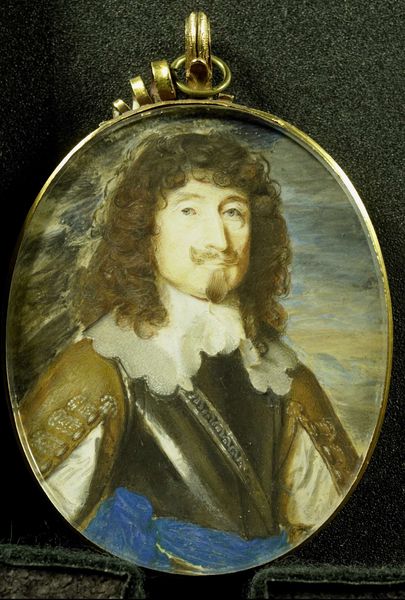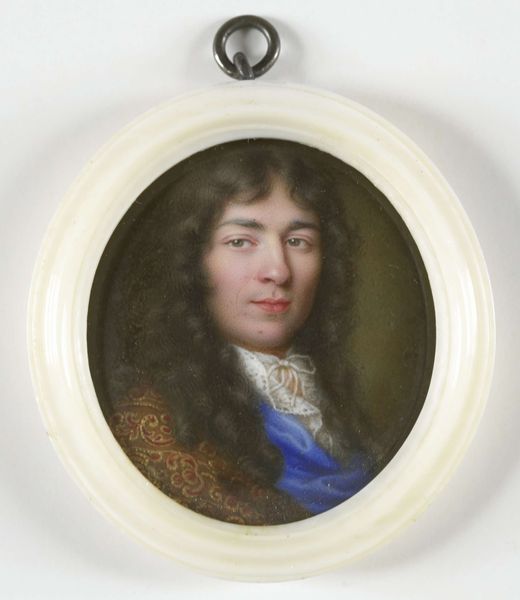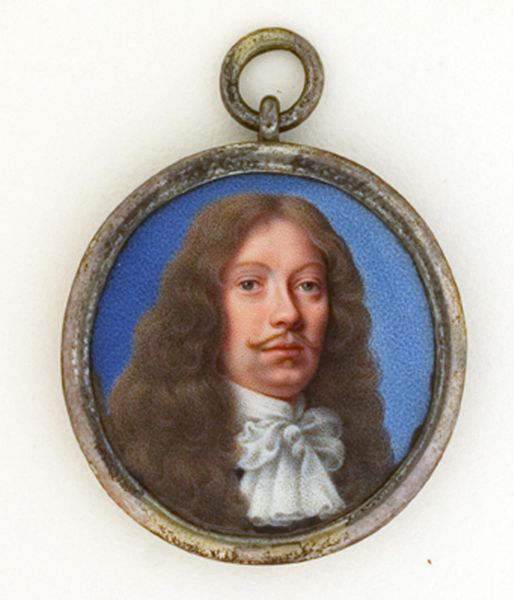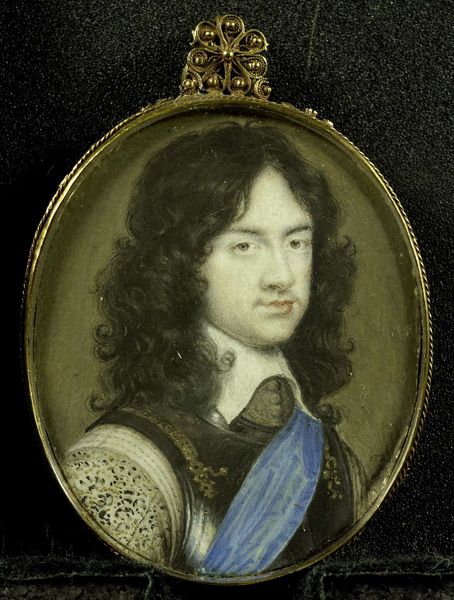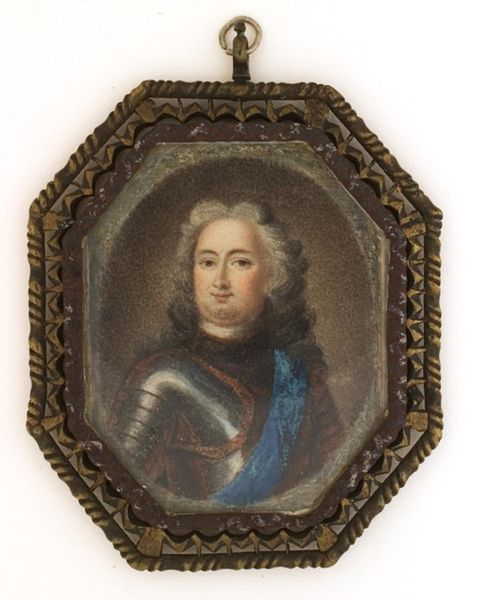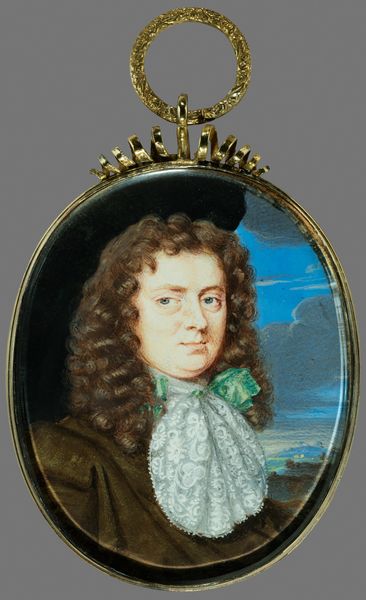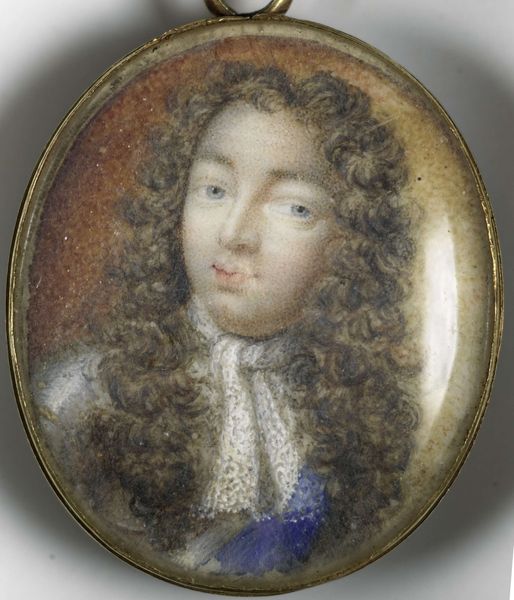
painting, oil-paint
#
portrait
#
baroque
#
painting
#
oil-paint
#
sculpture
#
miniature
Dimensions: height 2.5 cm, width 2.2 cm, depth 0.5 cm
Copyright: Rijks Museum: Open Domain
Curator: Hi, there. What can I help you with? Editor: So, this is a miniature portrait of Louis XIV, King of France, made between 1665 and 1675 by Jean Petitot. It’s oil paint, and it’s quite small, so that delicate work is striking. It feels very precious, doesn’t it? What strikes you about this work? Curator: It's a fascinating object when we consider its creation in terms of material and social history. Oil paint was becoming more refined, but the making of a miniature like this involved very specialized labour. Petitot, like other miniaturists, would have had a workshop of assistants to prepare materials, grind pigments, and even paint less critical areas. What does the oil paint itself tell us about the patronage systems at play here? Editor: I never thought about who else would have contributed! So the choice of oil paint itself signals something about this process? Curator: Precisely! Consider the sourcing of pigments: Where did the ultramarine blue come from? How was it traded? The very materiality of this object speaks volumes about global economies, resource extraction, and the skilled labour involved in creating an image of power. And it's deliberately small—think of the function it had for personal display as well as for purposes of diplomacy. Editor: So it is not just an image of Louis, but a symbol of production and power as well. That adds a completely different layer to its reading. Curator: Indeed. Analyzing its materiality allows us to challenge any notion of artistic genius in isolation, drawing attention to networks of exchange, extraction, and production. Editor: That gives me a whole new appreciation for miniature portraits. Thanks so much! Curator: My pleasure. Considering art in terms of labor, trade, and power relations can be a very insightful experience.
Comments
No comments
Be the first to comment and join the conversation on the ultimate creative platform.
